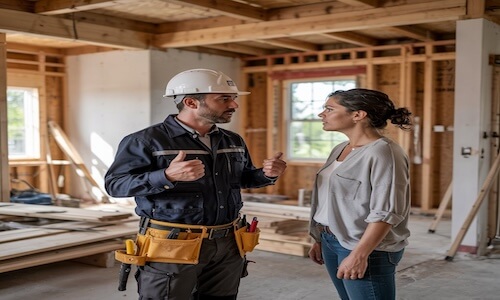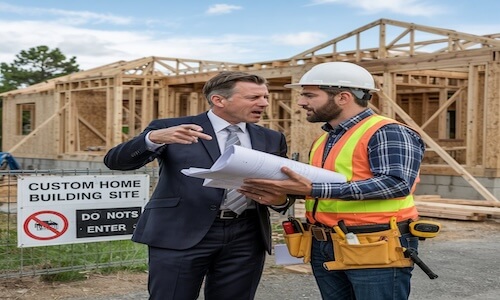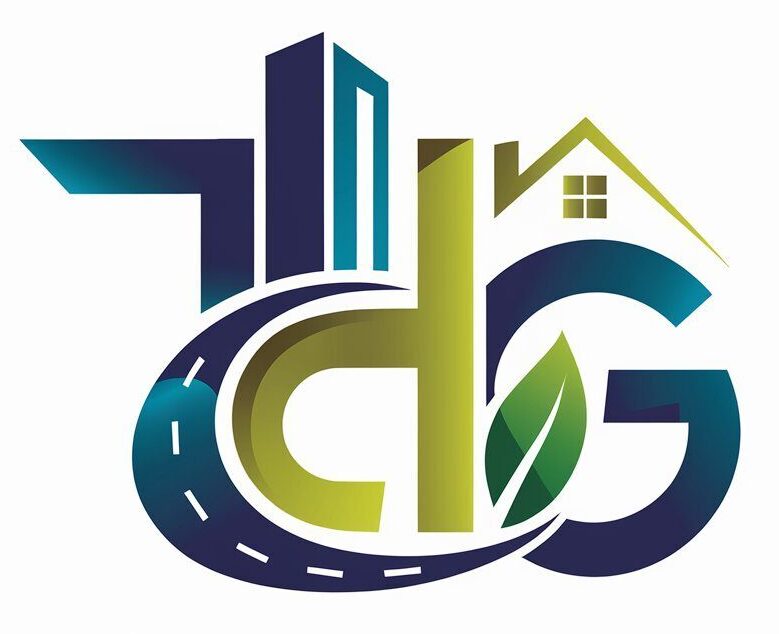Legal Conflicts
Legal Conflicts When Building a Custom Home: Prevention, Resolution, and Worst-Case Scenarios
Building a custom home is an exciting yet complex endeavor that involves multiple stakeholders, including homeowners, contractors, architects, and local government authorities. While the process offers the chance to design a dream home, it also comes with potential legal conflicts that can arise at various stages of construction. These disputes can lead to financial losses, project delays, and even litigation. This article explores the common legal issues that arise when building a custom home, how to prevent them, methods for resolving conflicts, and worst-case scenarios.

Common Legal Conflicts When Building a Custom Home

- Contract Disputes
- Homeowners and builders typically enter into a contractual agreement outlining the scope of work, deadlines, payment schedules, and responsibilities. Disagreements may arise due to unclear terms, breaches of contract, or failure to meet expectations.
- Permit and Zoning Issues
- Local municipalities have strict regulations governing construction, including zoning laws, environmental regulations, and permit requirements. Failure to secure proper permits or comply with zoning laws can lead to work stoppages, fines, or demolition orders.
- Construction Defects
- Structural deficiencies, poor workmanship, and the use of substandard materials can lead to disputes between homeowners and builders. Issues such as water intrusion, foundation cracks, and electrical hazards can cause safety concerns and costly repairs.
- Payment Disputes
- Builders and subcontractors often face disputes over delayed or incomplete payments. Homeowners may refuse payment due to dissatisfaction with work, while contractors might file mechanics’ liens to recover unpaid amounts.
- Timeline Delays
- Construction delays due to weather, labor shortages, or supply chain disruptions can create conflicts between homeowners and contractors. Delays can result in additional costs and inconvenience.
- Neighbor Disputes
- Construction activities can cause noise, dust, and property boundary concerns, leading to conflicts with neighbors. In some cases, encroachment on a neighbor’s land may lead to legal action.
How to Avoid Legal Conflicts

- Draft a Clear and Comprehensive Contract
- A well-drafted contract is the foundation of a successful construction project. It should detail:
- Scope of work
- Payment schedules
- Project timeline
- Dispute resolution mechanisms
- Responsibilities of each party
- Warranties and guarantees
- A well-drafted contract is the foundation of a successful construction project. It should detail:
- Conduct Thorough Research on Contractors
- Hiring a reputable and licensed contractor can prevent many legal issues. Verify credentials, check online reviews, and ask for references before entering into an agreement.
- Obtain Necessary Permits and Comply with Zoning Laws
- Work with local authorities to ensure all required permits are obtained before construction begins. Conduct a zoning analysis to confirm that the home design complies with local regulations.
- Implement Quality Control Measures
- Regular site inspections and independent assessments by engineers or construction experts can help identify and rectify potential issues before they become major problems.
- Establish a Clear Payment Schedule
- Payments should be tied to project milestones rather than fixed dates. This ensures that work progresses before payments are made, reducing the risk of financial disputes.
- Communicate Effectively with Neighbors
- Informing neighbors about construction schedules and addressing concerns early can prevent disputes. Ensuring work remains within legal boundaries can also help maintain good relationships.
How to Solve Legal Conflicts

- Negotiation and Mediation
- Open communication between parties can often resolve disputes without legal action. Mediation involves a neutral third party helping both sides reach an agreement.
- Arbitration
- Arbitration is a less formal alternative to litigation where an arbitrator reviews the case and makes a binding decision. This process is often quicker and more cost-effective than going to court.
- Litigation
- If disputes cannot be resolved through mediation or arbitration, filing a lawsuit may be necessary. This is often a last resort due to the high costs and lengthy process involved.
- Filing a Complaint with Regulatory Agencies
- If a contractor violates licensing or building codes, homeowners can file complaints with local building authorities or consumer protection agencies.
- Using Insurance and Warranty Claims
- Homeowners should check builder warranties and homeowner’s insurance policies to determine coverage for construction defects or damages.
Worst-Case Scenarios

- Project Abandonment by Builder
- If a builder walks away mid-project, homeowners may need to file a lawsuit for breach of contract. This can lead to financial losses and the need to hire a new builder.
- Demolition Orders Due to Permit Violations
- If a home is built without proper permits or violates zoning laws, authorities may issue a demolition order, resulting in substantial losses.
- Bankruptcy of Contractor or Homeowner
- If the contractor goes bankrupt, homeowners may struggle to recover payments or find another builder to complete the project. Conversely, if homeowners face financial difficulties, they may default on payments, leading to legal action from contractors.
- Structural Failures Leading to Injury or Legal Liability
- Major construction defects can pose safety hazards. If an issue results in injury or property damage, lawsuits and insurance claims can follow.
- Cost Overruns and Financial Struggles
- Unexpected costs due to poor planning or disputes can push a project over budget, potentially leading to halted construction or legal claims.
